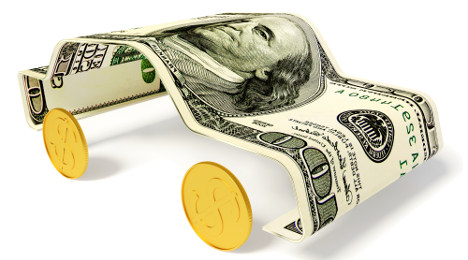S&P Global Ratings explains importance of alternative data in subprime auto ABS

Along with their latest assessment of the U.S. prime and subprime auto loan asset-backed securities (ABS) sectors, S&P Global Ratings analysts this week discussed how much alternative data has become a crucial component of their examination of subprime auto finance market.
S&P Global Ratings acknowledged that many subprime finance companies have incorporated alternative data into their underwriting process as they approve more loans to consumers without a FICO score. Because these finance companies have invested heavily in their own custom scoring models that take into account numerous attributes of a potential obligor, the vehicle to be financed, and the potential loan structure, credit analyst Timothy Moran explained that — in theory — these credit providers are better able to assess the consumer's ability and willingness to pay than in the past.
“New technology has been developed to allow for more in-depth credit application reviews beyond FICO scoring, suggesting that nontraditional or alternative data' have become increasingly important in forming a more complete picture of a potential obligor,” Moran said.
The firm pointed out that trended credit data are intended to supplement the traditional moment-in-time FICO credit snapshot with a more dynamic picture of a consumer's history of managing revolving accounts, typically over a period of up to 24 months. In fact, Equifax earlier this week also highlighted how much trended credit data can help finance companies and potentially lift auto finance originations.
Both S&P Global Ratings and Equifax emphasized that key risk factors considered include whether a consumer increases or decreases credit card balances and credit utilization, as well as whether a consumer pays revolving accounts in full or makes the minimum payment (or something in between) each month.
Importance is therefore placed not only on paying debt in a timely manner, but on how debt is handled over time, according to the firms.
Analysts went on to mention subprime auto finance companies also can take additional steps to mitigate credit risk such as insisting on higher loan acquisition discounts and conducting more vigorous income and employment verifications, as well as measures related to loan structure such as requiring a higher interest rate, higher down payment, lower balance, shorter loan term and biweekly payments.
“While we believe this growing cohort of consumers without FICO scores represents a trend that bears watching, we also note that many of these subprime issuers have been lending to this population for at least 20 years and are continually refining their risk assessment tools through their own robust internal scorecards, utilization of alternative or nontraditional data sources and a greater focus on verifications, as well as more conservatively structured loan terms,” S&P Global Ratings analysts said.
November auto ABS losses continued to rise year-over-year
S&P Global Ratings analysts determined the U.S. prime and subprime auto loan asset-backed securities (ABS) sectors for November were mixed compared with October. While losses were stable for prime and decreased for subprime, delinquencies rose in both sectors because of seasonality.
On a year-over-year basis, the firm found both sectors continued to demonstrate weakness with losses and delinquencies rising and recoveries declining.
According to a report published this week by S&P Global Ratings, prime net losses remained stable at 0.70 percent for November compared with 0.71 percent for October but increased from 0.49 percent a year earlier.
“We attribute the uptick in prime losses to lower recoveries and a couple of regional banks whose auto loan ABS transactions we began rating in 2014 becoming a slightly larger share of the prime index,” S&P Global Ratings credit analyst Amy Martin said.
“These issuers have slightly higher losses than the more-established prime securitizers,” Martin continued.
The report went on to note the subprime net loss rate decreased to 8.48 percent in November from 8.60 percent in October but rose from 7.45 percent a year earlier. Analysts explained the year-over-year increase of 103 basis points in losses is due to lower recoveries and deep subprime finance companies representing a greater share of the subprime index.
As S&P Global Ratings referenced during its 2017 projections about this market segment, that modified subprime index — which excludes three large, deep subprime issuers — posted stable annualized losses of 6.61 percent for November, which was in line with October’s level of 6.56 percent and the reading posted in November 2015, which was 6.62 percent.
Analysts noticed the recovery rate for the prime sector increased slightly to 50.04 percent in November from 49.79 percent in October but decreased year-over-year from 58.81 percent.
Subprime recoveries decreased to 33.85 percent in November from 37.27 percent in October and 37.57 percent a year earlier. The modified subprime index though reported stable recoveries of 38.00 percent in November compared with 38.89 percent in October and 37.79 percent in November 2015.
“In our view, softening vehicle prices in the used-car market have affected recoveries, and we expect this to continue in the coming months,” S&P Global Ratings analysts said. “Steady increases in the supply of off-lease vehicles are putting downward pressure on resale values.
“We also believe that longer loan terms and higher loan-to-value ratios have affected recoveries,” they continued. “These factors widen the gap between the loan outstanding amount and the vehicle value, thereby increasing loss severities.”

 View The Latest Edition
View The Latest Edition

